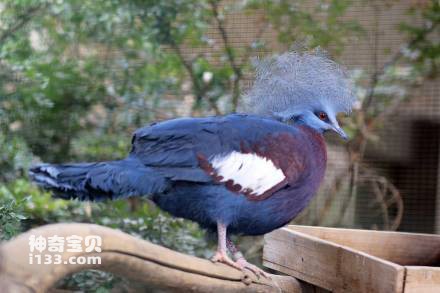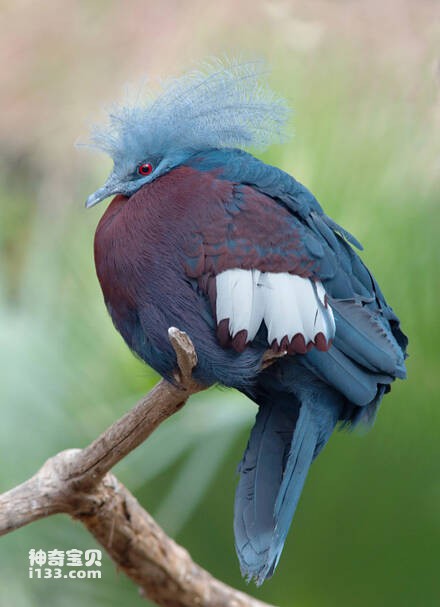Goura scheepmakeri
IUCN
LCBasic Information
Scientific classification
- name:Goura scheepmakeri
- Scientific Name:Goura scheepmakeri,Southern crowned-pigeon
- Outline:Landfowl
- Family:
Vital signs
- length:About 75 cm
- Weight:No textual research information is available
- lifetime:No textual research information is available
Feature
It has a dark maroon chest
Distribution and Habitat
It is found only in large areas of Papua New Guinea and Indonesia, but in rare numbers. The purple-breasted crested pigeon has disappeared from southeastern New Guinea.
Appearance
It is a large crested dove, 75 cm long, blue-gray in color, with a blue filamentary crown, red pupils and a dark chestnut chest. Female dove is similar to male dove.
There are two subspecies, distinguished by the coloration of the shoulders and abdomen: G. s. sclateri, mainly in southwestern Papua New Guinea, chestnut on the shoulders and bluish-gray on the abdomen; G. s. scheepmakeri: mainly found in southeastern New Guinea, it has bluish-gray shoulders and a maroon-colored belly.
Details
The yellow-breasted Crested pigeon (Goura scheepmakeri) is known as Southern crowned Pigeon and has two subspecies.

The purple breasted Crested dove was first described by Otto Finsch, whose living specimen was obtained from C. Scheepmaker at the Amsterdam Zoo and named after him.
The purple breasted Crested dove has a gentle temperament and is mostly distributed in lowlands of about 500 meters in wetlands and alluvial plains. They usually stay in trees. They begin to reproduce at 15 months of age, laying one egg at a time. After the eggs hatch, they take care of the chicks for a few months.

Due to deforestation and the high value of its meat and feathers, humans (including indigenous people) have been killing this rare lowland bird, which was listed as a threatened species in 1988. Since 1994, it has been listed as a vulnerable species by the International Union for Conservation of Nature (IUCN), and its numbers are gradually decreasing. It is also listed as Class II protection by the Convention on International Trade in Endangered Species of Wild Fauna and Flora (Washington Convention).
Protect wild animals and eliminate wild meat.
Maintaining ecological balance is everyone's responsibility!








